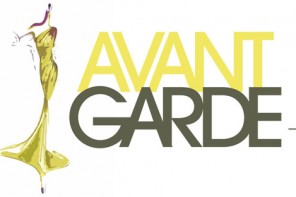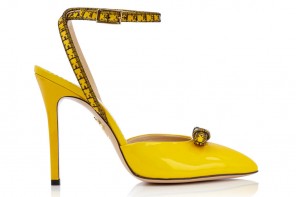Interview with SASSI´s Timony Siebert…
Hot on the heels of a recent episode of Carte Blanche which exposed the mislabelling of fish that is going on in the Western Cape, we thought we´d publish our interview with Timony Siebert, Coordinator for Southern African Sustainable Seafood Initiative (SASSI).
1. What does SASSI do?
SASSI is a collaborative initiative by WWF-SA and others that aims to improve the conservations status of over exploited seafood species through education and awareness, and help consumers and all those involved in the seafood industry become better informed and make more ocean friendly choices when buying and eating seafood. SASSI was launched in November 2004 and has 3 primary objectives:
- Promote awareness of, and encourage voluntarily compliance to the law’s governing seafood trade
- Shift consumer demand away from over-exploited species to more sustainable options
- Create awareness around marine conservation issues
2. Why sustainable seafood?
The world´s fish stocks are in crisis. As the demand for fish increases so does the pressure on already over-exploited species. In many cases, fishing practices are wasteful.The United Nations has estimated that a third of the seafood caught is dumped-often including vulnerable and endangered species.Three quarters of global fish populations are either fished to their maximum or beyond and fishing methods frequently damage habitats which are critical to the survival of marine life. Some sources report that commercial fishing has wiped out 90% of the oceans large predatory fish- sharks, swordfish, bill fish and tuna. With the global per capita rate of seafood consumption almost doubling from 9kg in 1961 to 16.5 kg in 2004, consumer demand for seafood is increasing.
3. Are South Africa´s oceans in trouble? How do they compare to the rest of the world?
In South Africa, line fish stocks in particular are at seriously low levels, with some species such as kabeljou at less than 5% of their original breeding stock biomass. Even stocks of well managed and more resilient fish such as hake and sardine have seen dramatic fluctuations in recent times. If we want to continue to enjoy wild caught seafood in the future, then we need to become better informed and start making more ocean-friendly seafood choices.
The South African line fishery was declared in a state of crisis in December 2000. Six out of ten of our most important commercial species are over exploited (kob/kabeljou, dusky & silverkob, red roman, red stumpnose, cape salmon, carpenter or silverfish). Given the globalization of the seafood industry, most of our prime quality seafood is exported to overseas markets.
4. Are there fish we should not buy at all?
All fish listed on the SASSI Red list are illegal to sell in SA.
5. Where can one get the SASSI list from?
They can be downloaded from the SASSI website at www.wwf.org.za/sassi or from some SASSI partners such as the Two Oceans Aquarium in Cape Town, Ushaka Marine World in Durban and at some of SASSI participating restaurants. The FishMs
is a mobile version of the pocket card and is a good source of information as it is updated more easily than the pocketcard. A list of SASSI Restaurant partners can be found on the website or at www.dining-out.co.za.
6. Are wholesalers, supermarkets and restaurants educated about this SASSI initiative?
Savvy seafood eaters are also beginning to demand that restaurants pay closer attention to the products that they offer, and many restaurants, retailers, chefs, caterers and franchise operators are responding. SASSI now engages with a host of local seafood eateries and franchise operators and offers a chef support programme. The Restaurant/ Retailer Participation Scheme was launched in October 2006 and some major retailers such as Pick n Pay and Woolworths have signed up with SASSI to improve their seafood procurement and help ensure the sustainability of our marine ecosystems.
7. What do the green, orange and red icons mean?
GREEN
These are fish that are from relatively healthy and well-managed populations that can cope with current fishing pressure. Some green species are not targeted by any fishery, but are managed as a sustainable by catch.These species are recommended as the most sustainable choices available.
ORANGE
These species may be legally sold by registered commercial fishers and retailers. However, if there is an increased demand for these fish, their future could be at risk because:
- The species may be rare because they are over fished.
- The fishery that catches them may damage the environment through the method used and/or have high by catch.
- It is at risk from overfishing because of the fish’s biology.
- There is not enough information about the species for scientists to make reliable recommendations about its conservation status
Consumers are encouraged to consider the implications of these choices.
RED
These species are illegal to buy or sell in South Africa. Some of these”no-sale” species are very important recreational species that cannot handle commercial fishing pressures.They may therefore only be caught for personal enjoyment and use, subject to the possession of a valid recreational fishing permit and other restrictions that may apply (such as daily bag limits, closed seasons and minimum sizes). Some are endangered species and are specially protected.
Not on the list?
Some imported species are not yet included on the SASSI list. A good place to find out more about any fish is Fish Base
where you can learn about the name, distribution and biology of a particular fish. A fish species may also be listed on other sustainable seafood lists. It is important to keep in mind that not all organizations use the same methodology to place species on various lists. A good summary is available at Incofish, who has compiled an International Seafood Guide.
8. What does it mean to be seafood legal?
Always buy seafood from reputable seafood dealers. If you are buying directly from fisherman, ensure that they have a
valid commercial fishing license. Never buy seafood from recreational fisherman, many of the species targeted by recre
ational fisherman and rare and cannot sustain heavy fishing pressure and as such are on the SASSI red list. Buying fish from recreational fisherman to support their hobby also undermines the livelihoods of those people that rely on seafood as their primary source of income. Make sure your fish are the right size and supplied to you in the right amounts.
9. What are your thoughts on farmed seafood? Is wild seafood better for the environment?
Farming of fish and seafood or “aquaculture” is often promoted as a way to provide alternative sources of seafood while reducing the pressure on wild fish stocks. It has become increasingly important around the world and almost 40% of the seafood directly consumed comes from aqua culture farms. There are already many farmed seafood products in our retailer’s freezers, such as oysters, mussels, salmon and prawns.
But the rapid onset of farming, often in developing countries with limited infrastructure and less stringent regulations has not been without its own set of problems and environmental concerns.
Some of these include:
- Depletion of wild caught populations to make fish meal for feeding of carnivorous farmed species such as salmon and tuna
- Habitat destruction e.g. mangrove forests are destroyed for prawn ponds
- Pollution from untreated waste, pesticides, antibiotics and hormones (often compromising freshwater aquifers)
- Disease and parasite transfer from farmed species to wild populations
- Escapees of farmed fish which breed with wild stocks and compromise the health of the wild stocks
Try choosing products from responsible aquaculture sources that advertise best practice standards or carry a valid eco-label or the Marine Stewardship Council logo and choose products that are better for the environment such as oysters, mussels and vegetarian fish species.
Choosing sustainable wild caught seafood is definitely the best choice.
10. How can one person make a difference?
Choose seafood from responsible sources and eat those species that are from healthy and well managed populations. Use SASSI´s colour-coded consumer pocket card which categorizes South African seafood species according to its conservation status and can be used to make the most sustainable and legal seafood choice.
Green species are the best choice. Orange species should be heeded with caution, and Red should be avoided completely
as these are illegal to sell in South Africa. In a world first, FishMS brings the list to you via a short message service. By texting the name of the fish to the number 079-499-8795, the service will send you an immediate response telling you whether to tuck in, think twice or avoid completely.
11. What fish do you recommend ordering? Any good substitutions for the orange or red list fish…?
Any of the seafood recommendations from the SASSI Green list.There are plenty of delicious alternatives to traditionally popular orange listed species, consumers just need to be more adventurous!







